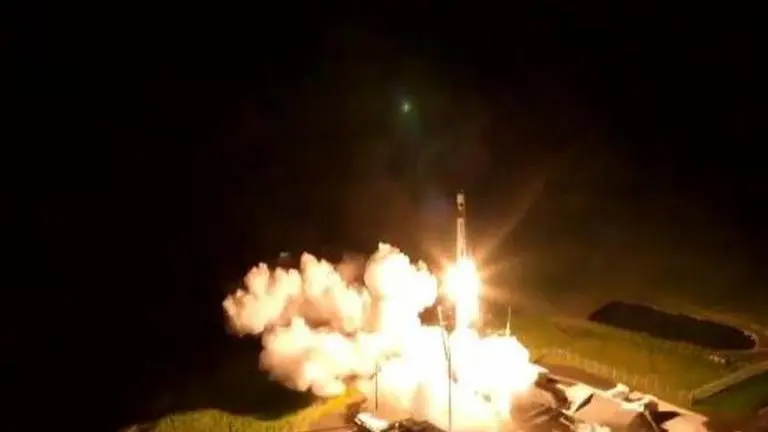Updated 28 June 2022 at 17:09 IST
Rocket Lab successfully launches NASA's CAPSTONE mission; quest for Moon landing begins
Rocket Lab's Electron Rocket lifted off with NASA's CAPSTONE satellite from New Zealand on June 28 at 3:36 pm IST from the Mahia peninsula.
- Science News
- 2 min read

Rocket Lab's Electron Rocket successfully lifted off with NASA's CAPSTONE CubeSat from New Zealand on June 28. The two-stage Electron took off at 3:36 pm IST from Rocket Lab's launch site in the Mahia peninsula kickstarting NASA's quest to send astronauts back to the Moon. About ten minutes after the launch, when the rocket crossed the Karman line (the boundary of space), the first stage separated from the Photon bus.
Liftoff! #CAPSTONE launched aboard a @RocketLab Electron rocket to pave the way for future @NASAArtemis missions to the Moon and beyond.
— NASA (@NASA) June 28, 2022
What’s next for the microwave oven-sized satellite? Check out https://t.co/dMVnvEQcfC for updates. pic.twitter.com/VVoAOjSYbD
The second stage Photon is where the CAPSTONE CubeSat is attached. According to NASA, this Photon will help the satellite escape the Earth's orbit and eventually enter the Moon's. Notably, the secondary launch vehicle will conduct a series of orbit-raising maneuvers over the next six days, and on the final day, it will conduct a final burn, accelerating itself to 39,428 kilometres per hour. This acceleration will allow CAPSTONE to escape Earth's orbit and will set the CubeSat on its course.
In a recent update, Rocket Lab CEO Peter Beck revealed that Photon has executed its first orbital burn and is on its way to the Moon.
Update: Lunar Photon has completed its first scheduled burn raising the orbit to 1040km x 170km. We are on our way.
— Peter Beck (@Peter_J_Beck) June 28, 2022
Understanding the pioneering mission
NASA believes that the CAPSTONE (Cislunar Autonomous Positioning System Technology Operations and Navigation Experiment) is a pathfinder mission that will pave way for the next Moon landing. Under this mission, NASA, along with Advanced Space and its other partners, will study the 'Near Rectilinear Halo Orbit' (NHRO), the same orbit planned for the Lunar Gateway.
Advertisement
Designed to last six months, the Cubesat, which weighs around 25 kg, will reach the lunar orbit in four months and test the feasibility of NHRO. It will be sent 1.3 million kilometers away, which is approximately three times the distance between the Moon and Earth. What's more, is that the highly stretched orbit would take bring the CubeSat within 3,400 kilometres of its northern pole but 76,000 kilometres from the southern one.
"CAPSTONE serves as a pathfinder for the orbit planned for Gateway – a space station at the Moon that will support NASA’s Artemis program", NASA said in a statement. "CAPSTONE will help reduce risk for future spacecraft by validating innovative navigation technologies and verifying the dynamics of this unique, halo-shaped orbit".
Advertisement
Published By : Harsh Vardhan
Published On: 28 June 2022 at 17:09 IST
